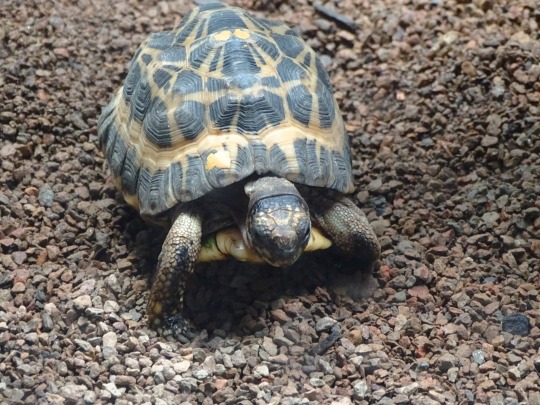#East African cities
Explore tagged Tumblr posts
Text
no seriously how am i nonwhite in 2 different directions and yet i STILL am so whitewashed
#both east african ethnicity & arab culture. & yet nothing#cant understand a word of tigrinya & am barely literate in arabic wtf am I doing#like I can speak arabic altho bad. & that's about the end of it#I was raised on spacetoon & pbs kids & clearly one of those won#its so ughhh to bc not only am I closer to the culture I'm not ethnically tied to out of the 2#I'm also fucking BAD at both of them & act more like a white girl than I thing actually normal white girls do#& I get that I grew up in SUCH a white majority city but like. not even a little?#not even a bit of pride? & i have such a weird white defensiveness complex esp cause IM NOT FUCKING WHITE#its so so bad guys I genuinely don't know what to do w myself#I'm so over my local public hs for this exact reason our stats are so fucked#nadia has a life#nadia rants
8 notes
·
View notes
Text



















Turtle Adoption Day
Turtle Adoption Day is a "day of action for the protection of endangered reptiles." Specifically, the day supports the welfare of turtles. It appears to have been created by a woman named Christine Shaw, who made a blog post on November 25, 2011, on the website of Found Animals, an animal welfare organization that works to find new homes for distressed and abandoned animals. The day was first observed two days later.
Having a turtle as a pet is a large undertaking and can be a lot of work. Turtles have a long lifespan, meaning having one as a pet is a long-term commitment. This may not be ideal for many prospective owners. Turtles also need specialized—and many times expensive—care when it comes to their food, water supply, and cages, which also may not make them ideal pets for many. Additionally, turtles are often carriers of salmonella. Generally, conservation organizations take the view that turtles belong in the wild, not in homes as pets.
Still, many people do get turtles as pets, and Turtle Adoption Day is about reacting positively to some negative decisions others have made in this regard. Some people who get turtles as pets treat them like throw-away pets: they purchase baby turtles, view them as mini-turtles, and give them away or release them into the wild when they grow. When turtles are released into the wild, their chances of survival are slim. Additionally, many turtles are endangered species and are hunted by humans and have threatened habitats. Turtles released in the wild can also become invasive species. They can multiply, and may then damage flora and fauna. But, some turtle owners take them to animal shelters when they get bigger and they don't know how to care for them, instead of releasing them into the wild. It is these turtles that Turtle Adoption Day works to protect.
Turtles live in almost all climates around the world, and are found on every continent except Antarctica. Most species are found in southeastern North America and South Asia. Only five species can be found in Europe. Turtles are part of the order of Testudines, an order that also includes tortoises and terrapins. Testudines are split into two suborders: Cryptodira and Pleurodira. Most turtles are Cryptodira. The main difference between the two is that Cryptodira retract their heads straight back into their shells, while Pleurodira fold their necks to the side when they retract their heads. However, sea turtles, which are Cryptodira, are unable to retract their heads into their shells. Turtles are then split into 13 families and 75 genera, and there are over 300 species in total.
Turtles spend most of their time in the water. Freshwater turtles live in ponds and lakes, coming on land to bask in the sun. Sea turtles spend most of their time in the ocean, coming onshore to lay eggs on the sand. Most of these webbed-feet reptiles have hard shells that protect them from predators. The top part of their shell is called a carapace and the bottom is called a plastron. The carapace is made up of about 60 bones, and is covered with plates made of keratin called scutes. Besides hard-shelled turtles, there are are also soft-shelled turtles and leatherbacks, which have a thick skin covering their carapace.
Turtles are not very social animals. They are most active during the day, when they spend their time searching for food. Most are omnivores, eating animals such as fish, insects, mollusks, crayfish, snakes, frogs, worms, clams, and other turtles, as well as grasses, algae, and other plants. Their diet varies depending on their species, with some subsisting on a mostly vegetarian diet.
Like birds, turtles have beaks and no teeth. They also are egg-laying animals. After digging a nest on land in sand or dirt, they lay their eggs and leave; they don't nurture their young once they are born. Turtles lay between 20 and 200 eggs at a time, depending on their species. Most of their eggs are eaten by carnivores before they hatch, and many are eaten after they are hatched, as the baby turtles do not yet have fully-developed shells to protect themselves.
Turtles vary in size, but some may grow very large. The largest freshwater turtle in North America is the alligator snapping turtle, which can grow up to 2.5 feet in length and weigh up to 200 pounds. The largest sea turtle is the leatherback turtle, which can grow to about 4.5 to 5.25 feet in length and weigh between 600 and 1500 pounds. The largest soft-shelled turtle is the Yangtze giant softshell turtle, which can grow up to 3.6 feet across and weigh as much as 309 pounds.
Many species of turtles are threatened, endangered, or critically endangered. Additionally, many turtles who were once pets have ended up in shelters because their owners weren't able to properly care for them. This makes it even more necessary that there is a day dedicated to caring for and protecting turtles. Today, on Turtle Adoption Day, we do our part to protect turtles by adopting those without homes.
How to Observe Turtle Adoption Day
The most appropriate way to observe the day is to adopt a turtle that was once someone's pet. Turtles can be adopted through Found Animals or Petfinder, or through a reptile rescue organization. They can also be found in local listings such as Craigslist, as well as at local animal shelters. By giving them a new and proper home, you can help preserve one turtle's life, and help protect turtles in general, many species of which face endangerment. If you can't provide a home for a turtle, you could donate to a reptile rescue organization.
Before you adopt a turtle, it is imperative that you are prepared to do so. You must make sure you know what type of environment turtles need in order to live in captivity, and you must have a large enough habitat for your new turtle to live. For example, turtles need at least ten gallons of water per one inch of shell, and for each additional turtle, you need another ten to twenty gallons of water. They need a dry basking area where they can crawl around and dry off, they need access to lamps that give off heat and UVA and UVB rays, they need a submersible heater to keep water at a warm enough temperature, and they need a water conditioning solution and a filter. When adopting a turtle you must also remember that having one as a pet is a long-term commitment, they can be a lot of work, they can take up a lot of your time, and they can be expensive.
Source
#aldabra giant tortoise#Masoala Hall#Zoo Zürich#Zurich#New York City#animal#reptile#original photography#day trip#travel#vacation#tourist attraction#Red-eared Slider#Bronx Zoo#my favorite zoo#USA#TurtleAdoptionDay#TurtleSponsorshipDay#27 November#Giant South American River Turtle#Radiated tortoise#Spider tortoise#Florida#Florida Softshell Turtle#Green Cay Nature Center & Wetlands#East African black mud turtle
2 notes
·
View notes
Video
youtube
Dubai of Africa? Africa's Rising Giant? Ethiopia's $ Billions MEGA Projects Will SHOCK You!
#youtube#ethiopia mega projects#africa development#future of ethiopia#east africa competition#dubai#dubai of africa#ethiopia#africa#infrastructure#development#economy#construction#future cities#african#megaprojects#futurecitie#engineering#kimlud#kimludcom#mega projects in africa#EastAfricaGrowth#AfricanDevelopment#ethiopiarising#EnergyTransformation#IndustrialGrowth#ModernEthiopia#FutureOfAfrica
3 notes
·
View notes
Text
Why Now is the Right Time to Buy Properties in East Africa
East Africa is rapidly becoming one of the most attractive regions for property investment on the African continent. From the fast-growing cities of Nairobi and Kigali to the serene shores of Zanzibar and Lake Victoria, the region offers a diverse array of residential and commercial real estate opportunities. For savvy investors and homebuyers looking to tap into an emerging market, there has never been a better time to buy properties in East Africa.
At TwentyFirst Residential, we specialise in helping both local and international buyers discover, evaluate, and acquire prime real estate across East Africa. Whether you’re looking for a modern apartment in the city or a luxury beachfront villa, we make your buying experience seamless, transparent, and rewarding.

The East African Advantage
East Africa is made up of dynamic economies including Kenya, Tanzania, Uganda, Rwanda, and Ethiopia. The region has experienced steady GDP growth, improved infrastructure, and an expanding middle class — all of which contribute to a healthy demand for quality real estate.
Here are a few reasons why buyers are increasingly choosing to invest in East Africa:
1. Strong Economic Growth
According to the African Development Bank, East Africa continues to post some of the highest economic growth rates in Africa. Countries like Kenya and Rwanda are emerging as regional hubs for finance, technology, and logistics — creating job opportunities and increasing the demand for residential housing.
2. Urbanization and Population Growth
The region is urbanizing rapidly, with millions moving into cities each year. This creates pressure on housing supply, which in turn drives up property values. For investors, this means a chance to secure high returns through both rental income and property appreciation.
3. Affordable Property Prices
Compared to global real estate hotspots, East Africa offers exceptional value. For example, you can buy a high-end apartment in Nairobi, Kampala, or Dar es Salaam for a fraction of the cost of a similar property in Europe or North America. This affordability makes it possible for first-time buyers and diaspora investors to get on the property ladder with confidence.
4. Government Support for Real Estate
Most East African governments have embraced real estate as a key pillar of development. With incentives such as tax relief, land reforms, and public-private partnerships, there is increasing ease of doing business in the property sector.
What Types of Properties Are Available?
At TwentyFirst Residential, we curate a wide selection of properties for different buyer profiles, including:
Apartments and Condominiums – Located in city centers and popular suburbs, ideal for young professionals or rental investors.
Villas and Townhouses – Perfect for families and those seeking spacious homes in gated communities.
Beachfront and Lakeside Homes – Available in coastal areas of Kenya and Tanzania, offering a luxurious retreat or Airbnb potential.
Plots and Land – For those looking to build or develop, we offer land parcels in prime locations with verified titles and legal support.
Why Choose TwentyFirst Residential?
Navigating the property market in East Africa can be challenging — especially for international buyers unfamiliar with local regulations and processes. That’s where we come in.
At TwentyFirst Residential, we provide end-to-end support, including:
Verified Listings: Every property is vetted for legal ownership, title deeds, and zoning.
Local Expertise: Our team has deep knowledge of the market trends and neighbourhood dynamics.
Transparent Process: We walk you through every step — from viewing and offer to due diligence and closing.
Diaspora Services: We offer tailored solutions for East Africans abroad looking to invest back home.
Our mission is simple: to help you buy properties in East Africa with confidence, clarity, and long-term value.
Who Is Buying in East Africa?
The region is attracting a diverse mix of buyers:
Local Homeowners seeking secure family homes.
East African Diaspora investing in retirement homes or rental properties.
Foreign Investors tapping into one of Africa’s fastest-growing real estate markets.
Developers looking to build residential or mixed-use projects in growing urban centers.
Whether you're buying to live, rent, or develop, the timing is right and the opportunities are abundant.
Ready to Make Your Move?
If you’ve been considering investing in Africa, now is the perfect time to buy properties in East Africa. From financial stability and government backing to affordable options and strong returns, the region is positioned for sustained real estate growth.
Browse our latest listings at TwentyFirst Residential or speak to one of our property advisors to start your journey today. Your future in East Africa awaits.
#Buy Properties in East Africa#East Africa Real Estate#Property Investment Africa#Nairobi Property Market#Tanzania Real Estate#Rwanda Property Investment#African Property Trends#How to Buy Property in Africa#Emerging Markets Real Estate#Invest in African Real Estate#East African Cities to Invest#Real Estate Opportunities Africa#Luxury Homes East Africa
0 notes
Text
Event: Detroit Data Forum: Race and Ethnicity
Welcome to our Data Forum where we will explore how race and ethnicity data are captured and tracked as well as improvements in the works. Join us online for lunch-and-learn filled with insightful discussions, tips, and tricks on all things related to the data. We’ll be joined by the Kristine Ajrouch, professional professor at Eastern Michigan University working on Middle Eastern-North African…
#Arab#Ashley Williams Clark#Census#Census 2020#Data Driven Detroit#Detroit#Detroit Future City#Eastern Michigan University#ethnicity#geography#Kristine Ajrouch#map#MENA#Middle East#Noah Urban#North African#race
0 notes
Text
East African cities swept by deadly rains and floods.
One of the flooding place in Tanzania. Courtesy image Downpours have killed at least 200 people and submerged homes and farms in Tanzania, Kenya and Burundi. At least 200 people were killed and dozens more were injured across East Africa in recent days, officials and aid groups said, as torrential rains, floods and landslides pummeled towns and cities in a region already grappling with the…

View On WordPress
1 note
·
View note
Text
Please consider spending time to learn more about Afro-Palestinian experiences and living under occupation while Black and Palestinian, along with Afro-Palestinian resistance efforts throughout the years. Here are some valuable articles and resources:
Articles:
In the heart of the Old City, generations of Afro-Palestinians persevere in the face of occupation by Mousa Qous
Putting the pieces together: Fragments of oral history in exile by Samah Fadil
‘Afro-Palestinians’ forge a unique identity in Israel by Isma'il Kushkush
The Africans of Jerusalem by Mousa Qous
The History Of Afro-Palestinians, Past And Present by Fayida Jailler
African-Palestinian community’s deep roots in liberation struggle by Electronic Intifada
Remembering Fatima Bernawi: Historic Palestinian fighter and liberated prisoner (1939-2022) on Samidoun
Fatima Barnawi, founder of Palestinian Women's Police and veteran prisoner, dies at 83 by Middle East Eye
On Fatima Bernawi, Women's Struggle, and Black-Palestinian Solidarity by Elom Tettey-Tamaklo
Afro Palestine: the African Diaspora in Palestine (not an article but a quick video summary of Afro-Palestinian history)
Note: highly recommend checking out Mousa Qous, the founder of the African Community Society, for his writings above all!
African Community Society of Jerusalem:
Their website— organization centered around the Afro-Palestinian community in Jerusalem.
General info about the group
ACS's instagram to learn more about Afro-Palestinian history.
Here is a write-up about the African Community Society, their impact within Palestinian society, and Afro-Palestinian history in Jerusalem specifically. Highly recommend taking the time to read this if you can.
Please take the time to watch this Documentary by Stephen Graham about former Israeli prisoner Ali Jiddah where he takes the viewer on a tour throughout Jerusalem and describes the unique struggles the Afro-Palestinian community face. He is quite a friendly guy and very funny:
youtube
#palestine#palestinian history#palestine history#palestina#stand with palestine#i'll probably add more links as i come across them#Youtube
15K notes
·
View notes
Text
"More than three-quarters of UK universities have pledged to exclude fossil fuel companies from their investment portfolios, according to campaigners.
The move, which is part of a wider drive to limit investment in fossil fuels, follows years of campaigning by staff and students across the higher education sector.
The student campaign group People & Planet announced on Friday that 115 out of 149 UK universities had publicly committed to divest from fossil fuels – meaning £17.7bn-worth of endowments are now out of reach of the fossil fuel industry.
Laura Clayson, from People & Planet, said it would have been unthinkable a decade ago that so many institutions had formally refused to invest in fossil fuels.
“That we can celebrate this today is down to the generations of students and staff that have fought for justice in solidarity with impacted communities. The days of UK universities profiteering from investments in this neo-colonial industry are over.”
People & Planet set up the Fossil Free universities campaign in 2013. As part of its efforts the group has highlighted the “struggles and voices” of communities on the frontline of the climate crisis in an attempt to bring home the real-world impact of investment decisions made by UK universities.
Clayson said: “The demand for fossil-free came from frontline communities themselves and it is an act of solidarity from global north organisers campaigning on this … We have a responsibility to speak the lived experiences of the communities resisting these inequalities into megaphones at protests and in negotiations within university boardrooms, to highlight their stories of struggle in spaces so often detached from the reality of everyday life on the frontlines.”
One of the projects highlighted by the campaign is the proposed East African Crude Oil Pipeline (EACOP) – a mega project that would stretch almost 900 miles from the Lake Albert region of Uganda to the coast in Tanzania, and release vast amounts of planet-heating carbon.
The pipeline is being built in spite of local opposition, and there are reports that protesters and critics have been met with state violence. Hundreds of student organisers have been involved in the struggle.
Ntambazi Imuran Java, the lead coordinator at the Stop EACOP Uganda campaign, said its members appreciated the efforts of UK students to bring an end to universities’ fossil fuel investments.
“[This] supports those who have worked tirelessly to stop deadly extraction projects like EACOP … Regardless of the arrests and violations on the activists, students’ activists and communities, we continue to demand for the Uganda authorities to stop the project and instead invest in renewables.”
People & Planet said four UK institutions – Birmingham City University, Glasgow School of Art, Royal Northern College of Music and the University of Bradford – had recently incorporated fossil fuel exclusions into their ethical investment policies, meaning 115 out of 149 UK universities have publicly committed to divest from fossil fuels.
Later this month, the group will group will unveil its latest university league table that ranks institutions by their ethical and environmental performance. Campaigners say they will then increase pressure on the remaining 34 UK universities yet to go fossil-free."
-via The Guardian, December 2, 2024
#united kingdom#uk#europe#scotland#wales#northern ireland#universities#fossil fuels#climate action#carbon emissions#climate crisis#climate change#sustainability#hope posting#good news#hope#divestment#fossil fuel divestment
530 notes
·
View notes
Text
The pale sims thing is funny because I have different marginalized groups represented on my blog. You’d think the way it was phrased I only had lightskin Black sims. I have sims ranging from East and South Asia to Polynedia, The Middle East and South America and sometimes they happen to be pale. Mind you, the sims of color I make are NEVER phenotypically white.
I just think that’s so disrespectful to see my page full of sims of color and to just say well they’re pale.. insinuating because they are nonblack they are white.
Anyways a little bit about me is I’m an Afro-Latina and I grew up in the inner city around different communities of color. My father owned a shipping business in our neighborhood and we’d see different immigrant families come in and out, sending money, food or clothing to their home countries. Growing up I had a Korean Unnie, I spent a lot of my childhood being babysat by her daughter, eating Korean food and learning bits of Korean. I went to school with black and brown kids stemming from Ghana, Madagascar, Somalia, Brazil, Honduras, Jamaica, Dominican Republic and Haiti. I grew up in a neighborhood where we all shopped at the same place to get foods that were native to our countries but had to be sold separately from American food. We had block parties, we babysat each others kids, we all went to after school together, played in the library and road the bus the home. That’s what inspires my gameplay.. I’m inspired by being the little black girl at celebrating Korean New Years with my neighbors, eating Fufu and Egusi for the first time with my Nigerian friends, finding my lifelong best friend who’s Dominican despite the historical violence between our countries and my African American friends who had my back in the school lunchrooms. And that’s what I want my game to reflect :)
This is my last post about the asks lol
155 notes
·
View notes
Text



Great Zimbabwe: An In-Depth Analysis of Africa’s Architectural and Economic Masterpiece
Introduction: The Greatness of African Civilization
Great Zimbabwe stands as one of the most remarkable and sophisticated civilizations in African history. Located in modern-day Zimbabwe, it flourished between 1100 and 1500 CE, serving as the centre of a vast trade empire that connected Africa to the Middle East, India, and China.
Despite colonial-era attempts to deny its African origins, Great Zimbabwe was entirely built by Black Africans, proving that African civilizations developed advanced architecture, urban centres, and economic systems long before European contact.
From a Garveyite perspective, the study of Great Zimbabwe is crucial because it represents:
Black architectural brilliance – The largest ancient stone city in sub-Saharan Africa.
Black economic power – A major hub for gold, ivory, and international trade.
Black political sovereignty – An empire built, governed, and controlled by Africans.
By reclaiming the history of Great Zimbabwe, Black people worldwide can reject colonial myths and recognize Africa’s legacy of innovation, wealth, and self-sufficiency.
1. The Origins of Great Zimbabwe
A. Geographic and Strategic Importance
Great Zimbabwe was built in a strategic location with access to gold mines, fertile lands, and trade routes.
The civilization was part of the Shona culture, whose people were skilled in ironworking, agriculture, and trade.
Its name, Zimbabwe, means “House of Stone” in the Shona language, reflecting its impressive stone structures.
Example: The city covered nearly 1,800 acres and housed up to 18,000 people, making it one of the largest pre-colonial African urban centres.
Key Takeaway: African civilizations were not nomadic or primitive—they built vast cities with complex infrastructures.
2. The Architectural Genius of Great Zimbabwe
A. The Great Enclosure: An African Architectural Wonder
The most famous structure in Great Zimbabwe is the Great Enclosure, a massive circular stone wall built without mortar.
The walls reach up to 36 feet high and stretch over 820 feet in length, making them the largest ancient stone structures south of the Sahara.
The conical tower inside the Great Enclosure is believed to be a symbol of power, wealth, and spiritual significance.
Example: European colonists refused to believe Black Africans built Great Zimbabwe and tried to attribute it to foreign civilizations (Phoenicians, Arabs, or even aliens), highlighting their racist denial of African ingenuity.
Key Takeaway: Africa had master builders who engineered grand cities using advanced techniques, disproving colonial myths.
B. The Hill Complex: The Royal and Religious Centre
The Hill Complex, located on a granite hill, served as the political and religious centre of Great Zimbabwe.
It was the seat of the king and was likely used for religious ceremonies, governance, and strategic defense.
The Shona people practiced ancestor worship, and the structures reflect a deep spiritual connection to their land and heritage.
Example: Many structures align with the movement of the sun and stars, proving that Great Zimbabweans had advanced knowledge of astronomy.
Key Takeaway: Black civilizations had political, spiritual, and scientific achievements that rivalled other global civilizations of the time.
3. Great Zimbabwe’s Economic Power: The Centre of a Global Trade Network
A. Control Over Gold Trade
Great Zimbabwe controlled rich gold mines in the region, making it one of the wealthiest African states of its time.
It became a major gold supplier for Swahili coastal cities, the Middle East, and even China.
Gold from Great Zimbabwe was traded across the Indian Ocean and found in Persian, Indian, and Chinese markets.
Example: The famous Kilwa Sultanate on the Swahili Coast depended on Great Zimbabwe for its gold supply, showing Africa’s key role in global trade.
Key Takeaway: Africa was not isolated—its resources fueled economies worldwide long before European colonization.
B. Trade with Asia and the Middle East
Archaeological discoveries in Great Zimbabwe include Chinese porcelain, Persian glass, and Indian beads, proving international trade.
The Swahili Coast, linked to Great Zimbabwe, had trading posts with Arab, Persian, and Indian merchants.
Ivory, copper, iron, and textiles were also traded, creating a diverse and wealthy economy.
Example: The trade connections of Great Zimbabwe show that Africans were engaged in globalization centuries before European involvement.
Key Takeaway: Africa was a key player in world trade, not an isolated or underdeveloped continent.
4. The Political and Social Structure of Great Zimbabwe
A. The Role of the King and Governance
Great Zimbabwe was ruled by a monarch, often referred to as the Mwene Mutapa (King).
The king controlled trade, wealth, and spiritual leadership, serving as a link between the people and the ancestors.
The empire was organized into a federation of smaller kingdoms, all loyal to the central ruler.
Example: The Kingdom of Mutapa, which rose after Great Zimbabwe’s decline, continued its legacy and expanded its power into Mozambique.
Key Takeaway: African civilizations had complex governance structures, contradicting colonial lies about African “tribalism.”
B. The Social Structure: A Balanced Society
The society was hierarchical, with royalty, nobles, traders, craftsmen, and farmers contributing to the empire.
Women held important roles in agriculture, trade, and spiritual leadership.
The people of Great Zimbabwe built strong, organized communities with specialized labor and social systems.
Example: Women played key roles in spiritual rituals and trade, showing the presence of gender balance in African societies.
Key Takeaway: African civilizations were structured, organized, and socially progressive.
The Decline of Great Zimbabwe: Lessons for Today
A. Why Did Great Zimbabwe Collapse?
The empire declined due to:
Overuse of natural resources, including deforestation and soil depletion.
Shifting trade routes that bypassed the city, reducing its economic power.
Internal conflicts and possible political instability.
By 1500 CE, Great Zimbabwe was largely abandoned, but its culture and influence lived on in successor states like the Kingdom of Mutapa.
Example: The modern nation of Zimbabwe is named after Great Zimbabwe, honouring its legacy of African greatness.
Key Takeaway: No Black nation can survive without sustainable economic policies, resource management, and strong leadership.
6. The Garveyite Vision: Rebuilding Africa’s Lost Glory
Great Zimbabwe proves that Africa was a centre of trade, culture, and innovation.
Black people today must control their own resources, just as Great Zimbabwe controlled its gold mines.
African architecture, governance, and economic systems must be reclaimed and studied to guide future development.
Pan-African unity is necessary—Black nations must work together as Great Zimbabwe did with the Swahili Coast.
Final Thought: Will We Reclaim the Legacy of Great Zimbabwe?
Marcus Garvey taught:
“The Black skin is not a badge of shame, but rather a glorious symbol of national greatness.”
Will Black people continue to believe colonial lies about African history, or will we reclaim the truth?
Will we build self-sufficient Black economies, or remain dependent on foreign powers?
Will we celebrate our past and use it to shape our future, or let our history be erased?
The Choice is Ours. The Time is Now.
#black history#black people#blacktumblr#black tumblr#black#black conscious#pan africanism#africa#black power#black empowering#blog#marcus garvey#great zimbabwe#black excellence#ReclaimOurHistory#Garveyism
55 notes
·
View notes
Photo

Kingdom of Abyssinia
The Kingdom of Abyssinia was founded in the 13th century CE and, transforming itself into the Ethiopian Empire via a series of military conquests, lasted until the 20th century CE. It was established by the kings of the Solomonid dynasty who, claiming descent from no less a figure than the Bible's King Solomon, would rule in an unbroken line throughout the state's long history. A Christian kingdom which spread the faith via military conquest and the establishment of churches and monasteries, its greatest threat came from the Muslim trading states of East Africa and southern Arabia and the migration of the Oromo people from the south. The combination of its rich Christian heritage, the cult of its emperors, and the geographical obstacles presented to invaders meant that the Ethiopian Empire would be one of only two African states never to be formally colonised by a European power.
Origins: Axum
The Ethiopian Highlands, with their reliable annual monsoon rainfall and fertile soil, had been successfully inhabited since the Stone Age. Agriculture and trade with Egypt, southern Arabia, and other African peoples ensured the rise of the powerful kingdom of Axum (also Aksum), which was founded in the 1st century CE. Flourishing from the 3rd to 6th century CE, and then surviving as a much smaller political entity into the 8th century CE, the Kingdom of Axum was the first sub-Saharan African state to officially adopt Christianity, c. 350 CE. Axum also created its own script, Ge'ez, which is still in use in Ethiopia today.
Across this Christian kingdom, churches were built, monasteries founded, and translations made of the Bible. The most important church was at Axum, the Church of Maryam Tsion, which, according to later Ethiopian medieval texts, housed the Ark of the Covenant. The Ark, meant to contain the original stone tablets of the Ten Commandments given by God to Moses, is supposed to be still there, but as nobody is ever allowed to see it, confirmation of its existence is difficult to achieve. The most important monastery in the Axum kingdom was at Debre Damo, founded by the 5th-century CE Byzantine ascetic Saint Aregawi, one of the celebrated Nine Saints who worked to spread Christianity in the region by establishing monasteries. The success of these endeavours meant that Christianity would continue to be practised in Ethiopia right into the 21st century CE.
The kingdom of Axum went into decline from the late 6th century CE, perhaps due to overuse of agricultural land, the incursion of western Bedja herders, and the increased competition for the Red Sea trade networks from Arab Muslims. The heartland of the Axum state shifted southwards while the city of Axum fared better than its namesake kingdom and has never lost its religious significance. In the 8th century CE, the Axumite port of Adulis was destroyed and the kingdom lost control of regional trade to the Muslims. It was the end of the state but not the culture.
Continue reading...
162 notes
·
View notes
Text
HERE is the list of the 134 countries that are NOT supporting South Africa's 🇿🇦 claims of genocide against Israel 🇮🇱:
🇦🇩 Andorra
🇦🇴 Angola
🇦🇬 Antigua and Barbuda
🇦🇷 Argentina
🇦🇲 Armenia
🇦🇺 Australia
🇦🇹 Austria
🇧🇸 Bahamas
🇧🇧 Barbados
🇧🇾 Belarus
🇧🇿 Belize
🇧🇹 Bhutan
🇧🇦 Bosnia and Herzegovina
🇧🇼 Botswana
🇧🇬 Bulgaria
🇧🇮 Burundi
🇨🇻 Cabo Verde
🇰🇭 Cambodia
🇨🇦 Canada
🇨🇫 Central African Republic
🇨🇱 Chile
🇨🇳 China
🇰🇲 Comoros
🇨🇬 Congo
🇨🇷 Costa Rica
🇭🇷 Croatia
🇨🇺 Cuba
🇨🇾 Cyprus
🇨🇿 Czech Republic
🇨🇩 Democratic Republic of the Congo
🇩🇰 Denmark
🇩🇲 Dominica
🇩🇴 Dominican Republic
🇹🇱 East Timor (Timor-Leste)
🇪🇨 Ecuador
🇸🇻 El Salvador
🇬🇶 Equatorial Guinea
🇪🇷 Eritrea
🇪🇪 Estonia
🇸🇿 Eswatini
🇪🇹 Ethiopia
🇫🇯 Fiji
🇫🇮 Finland
🇫🇷 France
🇬🇪 Georgia
🇩🇪 Germany
🇬🇭 Ghana
🇬🇷 Greece
🇬🇩 Grenada
🇬🇹 Guatemala
🇭�� Haiti
🇭🇳 Honduras
🇭🇺 Hungary
🇮🇸 Iceland
🇮🇳 India
🇮🇪 Ireland
🇮🇹 Italy
🇯🇲 Jamaica
🇯🇵 Japan
🇰🇪 Kenya
🇰🇮 Kiribati
🇰🇵 Korea, North (North Korea)
🇰🇷 Korea, South (South Korea)
🇽🇰 Kosovo
🇱🇦 Laos
🇱🇻 Latvia
🇱🇸 Lesotho
🇱🇷 Liberia
🇱🇮 Liechtenstein
🇱🇹 Lithuania
🇱🇺 Luxembourg
🇲🇬 Madagascar
🇲🇼 Malawi
🇲🇹 Malta
🇲🇭 Marshall Islands
🇲🇺 Mauritius
🇲🇽 Mexico
🇫🇲 Micronesia
🇲🇩 Moldova
🇲🇨 Monaco
🇲🇳 Mongolia
🇲🇪 Montenegro
🇲🇲 Myanmar (Burma)
🇳🇷 Nauru
🇳🇵 Nepal
🇳🇱 Netherlands
🇳🇿 New Zealand
🇳🇮 Nicaragua
🇲🇰 North Macedonia (Macedonia)
🇳🇴 Norway
🇵🇼 Palau
🇵🇦 Panama
🇵🇬 Papua New Guinea
🇵🇾 Paraguay
🇵🇪 Peru
🇵🇭 Philippines
🇵🇱 Poland
🇵🇹 Portugal
🇷🇴 Romania
🇷🇺 Russia
🇷🇼 Rwanda
🇰🇳 Saint Kitts and Nevis
🇱🇨 Saint Lucia
🇻🇨 Saint Vincent and the Grenadines
🇼🇸 Samoa
🇸🇲 San Marino
🇸🇹 Sao Tome and Principe
🇷🇸 Serbia
🇸🇨 Seychelles
🇸🇱 Sierra Leone
🇸🇬 Singapore
🇸🇰 Slovakia
🇸🇮 Slovenia
🇸🇧 Solomon Islands
🇪🇸 Spain
🇱🇰 Sri Lanka
🇸🇪 Sweden
🇨🇭 Switzerland
🇹🇼 Taiwan
🇹🇿 Tanzania
🇹🇭 Thailand
🇹🇴 Tonga
🇹🇹 Trinidad and Tobago
🇹🇳 Tunisia
🇹🇲 Turkmenistan
🇹🇻 Tuvalu
🇺🇦 Ukraine
🇬🇧 United Kingdom (UK)
🇺🇸 United States of America (USA)
🇺🇾 Uruguay
🇻🇺 Vanuatu
🇻🇦 Vatican City
🇻🇳 Vietnam
🇿🇲 Zambia
🇿🇼 Zimbabwe
447 notes
·
View notes
Text
TWISTED CHARACTERS AND THE MUSIC I THINK THEY'D LIKE! (savanaclaw ver.)

the part two i promised for no one specifically. i'm mainly doing every dorm because i want to -isa<3




LEONA KINGSCHOLAR
I actually think Leona would listen to music fairly frequently. He's a rich kid, I def headcanon he got one of them expensive ass sports cars and probably speeds on the highway blasting music, pissing off literally everyone else tryna drive home from work. His music taste would be surprisingly diverse, too. He'd probably like a mix of 2000s rnb which includes like Rihanna, Ne-Yo, AALIYAH SO OBVIOUSLY, Akon, and he'd be a (not obsessive) Beyonce stan. He'd listen to NYC and UK drill, and since I headcanon Sunset Savanna to be an East African inspired nation, he'd probably have some Kenyan/Tanzanian/Ugandan/Rwandan artists on his playlist too (since those countries are where Swahili is spoken widely.) I don't have any artists to name but if yall know some put me on.




RUGGIE BUCCHI
Ruggie, similar to Leona would have diverse music taste. Probably grew up surrounded by music, listening to whatever was on the radio while cooking sum for his grandmother, and now he uses one of Leona's ten credit cards to pay for his Spotify premium. He def listens to albums when he's chilling on his bed, studying/trying to unwind after a long day of running around. Though he grew up on similar traditional East African music, his favorite genres (IN MY OPINION) would be alternative hip hop and indie music. He LOVESSSSS Kanye West (tcd to yeezus), Tyler the Creator (and honestly all of OFWGKTA), Gorillaz, Childish Gambino, Vampire Weekend, and early alternative hip hop artists like the Beastie Boys, A Tribe Called Quest, Cypress Hill, etc. He was also probably put onto Britpop through Gorillaz, and likes Blur, Oasis, and (it's a secret tho) he fucks with Radiohead's "ok computer" album.




JACK HOWL
Jack is a canon gym rat. we already know he listens to music like HELL while he's bench pressing and doing pushups. I think he'd have similar music taste to Ruggie, excluding the "indie" part. (and he probably uses apple music, too.) Jack enjoys alternative hip-hop, and west coast hip-hop. He'd like Kanye and some of Tyler's popular songs, but he'd REALLY enjoy early 90s west coast rap like N.W.A, Dr. Dre. 2PAC ESPECIALLY, KENDRICK LAMAR ESPECIALLY. His favorite album is probably good kid maad city.

period -isa<3
#disney twst#twisted wonderland#leona kingscholar#ruggie bucchi#jack howl#savanaclaw#headcanons#twst headcanons#twst imagines#twst disney#leona kingscholar x reader#ruggie bucchi x reader#jack howl x reader
167 notes
·
View notes
Text
Why East African Real Estate Is the Next Big Investment Opportunity
In recent years, East African real estate has steadily emerged as a hotspot for both local and international investors. With its fast-growing economies, rapid urbanisation, expanding middle class, and ambitious infrastructure projects, the region presents an unparalleled opportunity for those looking to diversify their real estate portfolios.
Whether you're a seasoned investor or someone looking for fresh markets with high growth potential, East Africa deserves a spot on your radar. Here's why investing in East African real estate is not just a trend, but a smart strategic move.

1. Strong Economic Growth and Stability
East African countries such as Kenya, Tanzania, Rwanda, Uganda, and Ethiopia have consistently recorded impressive GDP growth rates over the past decade. This economic resilience, even during global downturns, has created a fertile ground for real estate investment.
Kenya, the region’s largest economy, has become a hub for finance, technology, and logistics, driving demand for both residential and commercial spaces.
Rwanda has earned global praise for its ease of doing business, transparent government policies, and clean, green capital—Kigali—which is drawing attention from real estate developers and foreign investors alike.
Tanzania and Uganda are seeing urban centers like Dar es Salaam and Kampala evolve into thriving commercial zones with increasing demand for modern housing and retail spaces.
This economic dynamism fuels housing demand, boosts rental yields, and provides stable long-term returns for real estate investors.
2. Urbanization and Population Growth
East Africa is undergoing one of the world’s fastest urbanization trends. According to UN data, the region’s urban population is projected to double by 2040. Cities like Nairobi, Kampala, Kigali, and Addis Ababa are already experiencing strain on existing housing infrastructure, leading to high demand for new developments.
This rapid urban growth is a key driver for:
Affordable housing developments
Mixed-use properties
Retail and office spaces
Modern apartment complexes catering to the middle class
For investors, this means a growing market for both rental income and property value appreciation.
3. Infrastructure Development
Massive infrastructure projects are transforming East Africa’s real estate landscape. Roads, airports, railways, and ports are being modernized or constructed to support economic growth and cross-border trade.
Examples include:
Kenya’s Standard Gauge Railway (SGR) connecting Mombasa to Nairobi and further inland.
The Addis Ababa-Djibouti railway, which enhances Ethiopia’s access to global markets.
Upgrades to airports in Kigali, Nairobi, and Entebbe to support tourism and international trade.
Infrastructure improves accessibility, increases land value, and opens up formerly hard-to-reach areas for new real estate development.
4. Government Incentives and Policy Reforms
Governments across East Africa are actively encouraging real estate development through policy reforms and incentives:
Tax breaks for developers in affordable housing sectors
Public-private partnerships (PPPs) for large-scale housing projects
Digitization of land registries to improve transparency and security of property rights
Such reforms make it easier, safer, and more profitable for investors to enter the East African real estate market.
5. High Returns and Rental Yields
Compared to more saturated markets in the West, East African real estate offers relatively high returns. Rental yields in prime residential areas of Nairobi or Kigali often exceed 7–10%, which is significantly higher than global averages.
Additionally, with the growth in tourism, short-term rental markets (such as Airbnb) are booming in major cities and near national parks or coastal regions. This offers a lucrative alternative revenue stream for property owners and investors.
6. Untapped Markets and Innovation
The East African real estate sector still has vast untapped potential, especially in:
Student housing
Industrial parks and logistics centers
Eco-friendly and green buildings
Smart cities and tech-enabled homes
As the region embraces innovation, tech startups and proptech firms are beginning to transform the way real estate is marketed, financed, and managed. This offers early movers a chance to shape and benefit from the next wave of growth.
7. Regional Integration and the AfCFTA
The African Continental Free Trade Area (AfCFTA), now in effect, will further boost East Africa’s attractiveness. The agreement aims to facilitate trade among African countries by reducing tariffs and increasing collaboration across borders.
This integration is expected to:
Increase demand for commercial real estate
Encourage cross-border investments
Create regional hubs and business parks
Investing in East African real estate today positions you to benefit from tomorrow’s continental growth engine.
Final Thoughts
The East African real estate market offers a compelling blend of opportunity, growth, and stability. Whether it’s residential, commercial, or mixed-use developments, the region presents a favourable environment for strategic, long-term investments.
Investors who act early—while markets are still developing—stand to gain the most. With supportive policies, a young and growing population, improved infrastructure, and promising returns, East Africa is truly positioning itself as the next frontier in global real estate.
If you're considering investing or exploring opportunities in the region, start by understanding the local dynamics, partner with experienced professionals, and tap into one of the fastest-growing real estate markets in the world.
#East African Real Estate#Real Estate Investment#Property Investment East Africa#African Real Estate Market#Emerging Markets Real Estate#Investment Opportunities Africa#Real Estate Development#Property Market Analysis#Urban Growth Africa#Affordable Housing Africa#Commercial Real Estate#Residential Real Estate#Real Estate Finance Africa#Infrastructure Development#Long-Term Investment Strategy#Smart Cities Africa#Real Estate Forecast#Uganda Real Estate Investment#Rwanda Property Market#Kenya Real Estate#Tanzania Property Opportunities#Ethiopia Real Estate
0 notes
Text
The Zoot Suit in Black Culture
In today's history lesson, we will discuss the vintage zoot suit, a men's suit with high-waisted, wide-legged, tight-cuffed, pegged trousers, and a long coat with wide lapels and wide padded shoulders.
The Chitlin Circuit (during the era of US racial segregation) was a network of clubs, theaters, and other venues where Black entertainers were allowed to perform, as defined by the Oxford Dictionary. These hotspots had comedy shows where entertainers such as Pigmeat Markham would dress up in baggy suits as part of their routine. This took place in the 1920s, eventually giving way to the more flamboyant, stylish and colorful zoot suit.
Born out of the inner city ghettos and African-American creativity, the suits were first associated with cities such as Harlem, Detroit and Chicago in the 30's. Musicians helped popularize the suit with a more tailored distinguished look, Cab Calloway, an American entertainer, famously wore the zoot suit in the movie, Stormy Weather (1943). Jazz and Jump Blues were all the rage back then and you could spot these suits at the dance halls.

“The zoot was not a costume or uniform from the world of entertainment. It came right off the street and out of the ghetto.” -Harold C. Fox, a Chicago clothier
According to Cab Calloway's Cat-ologue: A "Hepster's" Dictionary (1938), he called the zoot suit "the ultimate in clothes. The only totally and truly American civilian suit."


It was the signature look of the African-American subculture of Hepcats. A young Malcolm X could be seen wearing one. Dancers to businessmen to singers to instrumentalists, all dressed in zoots. It wasn't just about making a fashion statement, but a sense of cultural pride.
The look picked up in other communities such as the Mexicans, Filipinos, Japanese etc... forming their subcultures respectively.

On June 3, 1943, a string of attacks against Mexican-Americans started in Downtown Los Angeles, CA. Approximately 11 sailors got into a heated confrontation with some young Mexican-Americans and proceeded to assault them. The next day, hundreds of sailors traveled to a predominantly Mexican-American settlement in East Los Angeles and began another assault. Harassing anyone who wore a zoot suit, making them strip and burning their clothes. White residents and servicemen used the excuse that the zoots weren't "patriotic" due to it containing large amounts of fabric. This is during World War II were rationing food and fabrics were seen as necessary. This vicious and violent behavior spread to different cities leaving nothing, but devastation and trauma in its wake. These were known as the infamous Zoot Suit Riots of 1943.
Source 1 Source 2 Source 3 Source 4
#zoot suit#black history#black tumblr#black art#black women#theafroamericaine#black fashion#black hair#black culture#black girls of tumblr#nostalgia#Culture#african american#african history#vintage photography#cab calloway#art style#style#Mexican#history#writers on tumblr#writing#Detroit#america#north america#american history#california#black men#black community#melanin
75 notes
·
View notes
Text
some rick riordan reader: I know Norse, Greek, and Egyptian mythology haha I ace the school tests, I'm just too good-
east asian, south asian, african, northern european, slavic, latin american mythologies:
i recommend wikipedia's list of pantheons and rick riordan presents books to help with this. you are missing out if you haven't read Aru Shah, Storm Runner, Dragon Pearl, Tristan Strong, Race to the Sun, Paolo Santiago, City of the Plague God, and The Last Fallen Star. if you're an young adult, American Gods by Neil Gaiman is THE mythology book that redefines modern concepts of deities. The Freya series by Matthew Laurence is also an excellent, more teenager-friendly take on modern gods. honorable non-mythology mention from riordan presents: Sal and Gabi.
#rick riordan#pjo#hoo#magnus chase#percy jackson#kane chronicles#aru shah#storm runner#dragon pearl#tristan strong#sal and gabi#race to the sun#paolo santiago#city of the plague god#the last fallen star#surprise tag
119 notes
·
View notes